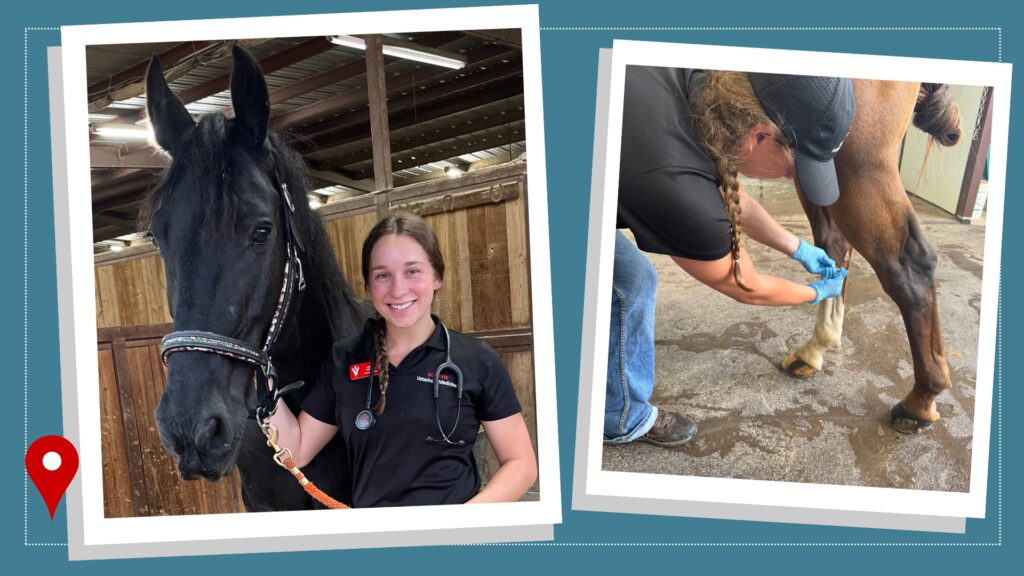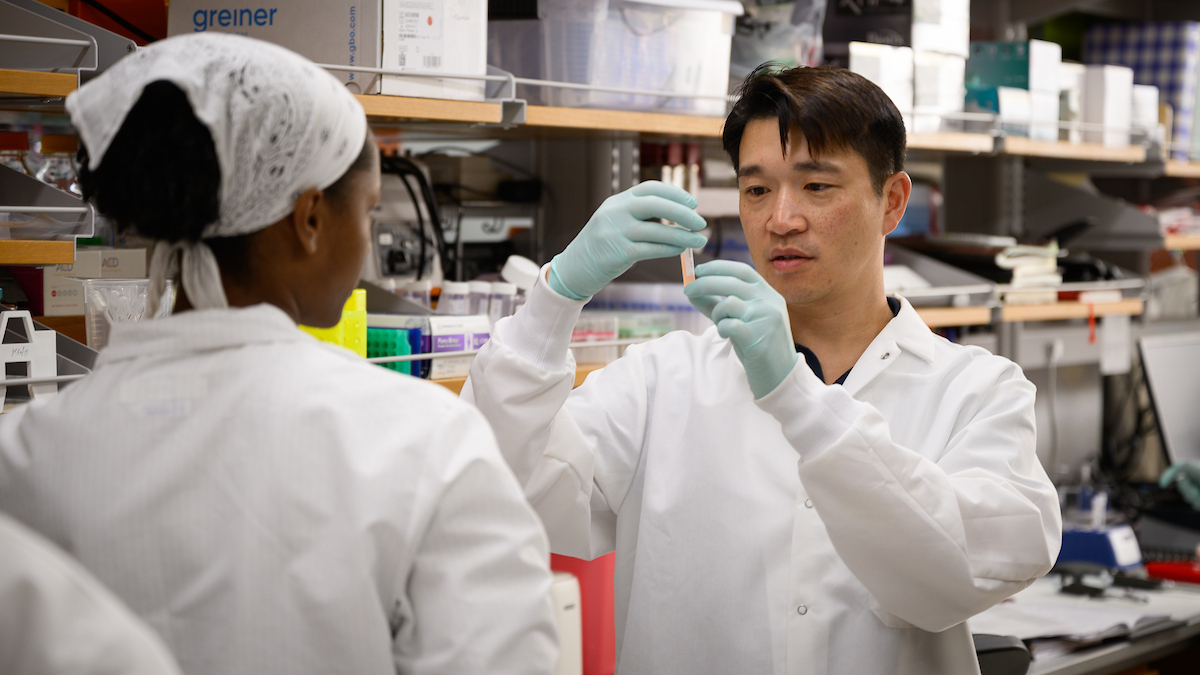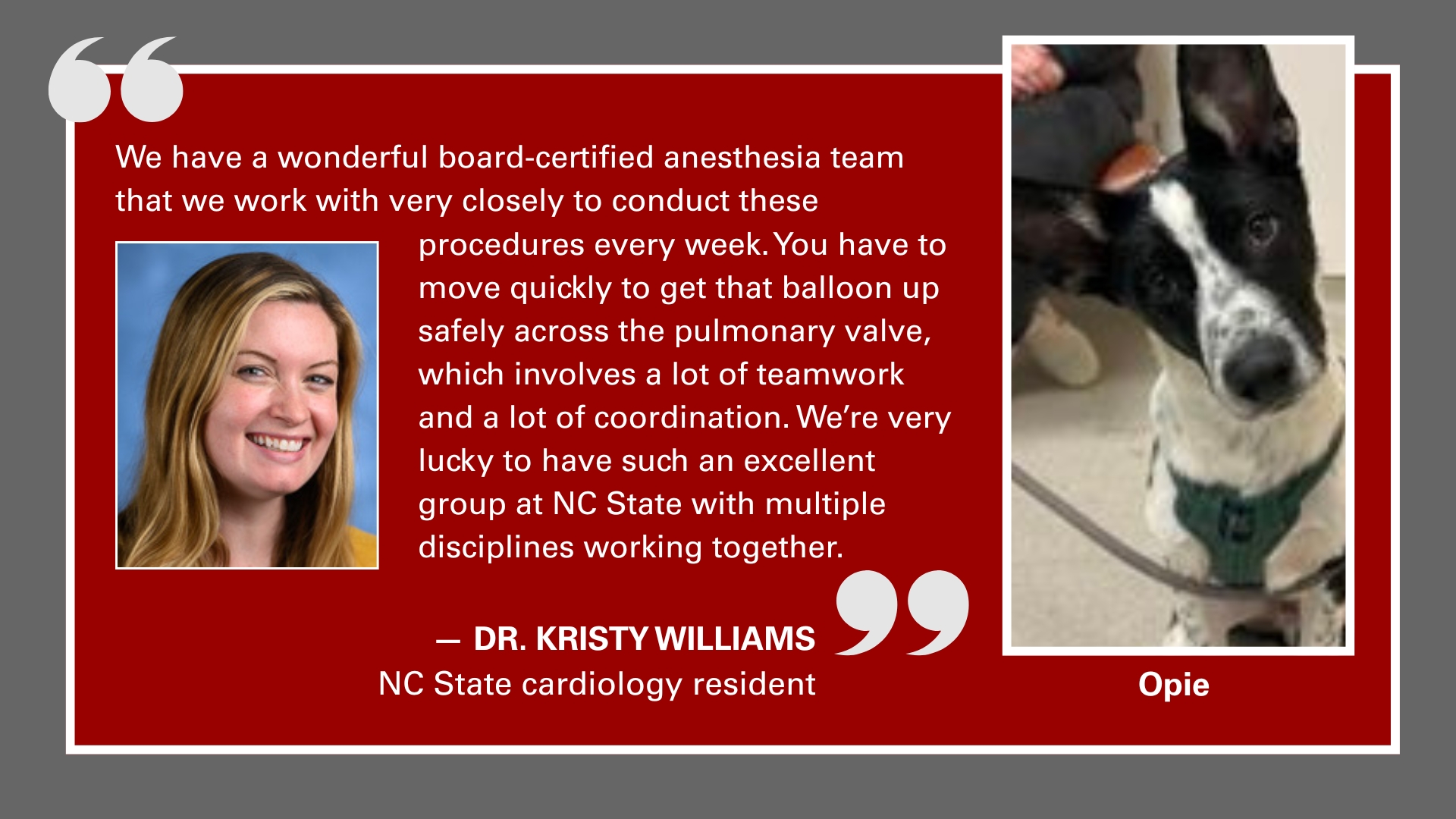From a Texas Equine Hospital, Caitlyn Coleman Reports
Students at the NC State College of Veterinary Medicine have access to all kinds of internships, externships and research experiences during their four years of school. This summer, several students are sharing some of what they're doing and learning in real time.

It’s my last week in Texas, and I am sad to leave! This week I was at Weems and Stephens Equine Hospital in Aubrey. Weems and Stephens is a nine-doctor practice that focuses on general practice and emergencies. They see a variety of different horse breeds and disciplines and have a surgery emphasis.
Each morning began with treatments at 7 a.m. followed by rounds of all the in-hospital patients. I was able to be involved in quite a few colic emergency workups that ended up being surgical cases, which was really interesting to see.
A normal colic is worked up by obtaining vitals upon arrival and asking the client pertinent questions such as how long the episode has been occurring, has the horse been given any medications, what is the horse’s normal diet, etc. An ultrasound is normally performed on the abdomen to assess organs and the gastrointestinal tract motility and location. Next, it is common to perform a rectal exam to see whether any intestinal displacements, impactions or gas/distended intestines can be felt. A nasogastric tube is then passed through the nostril into the stomach to relieve any fluid or gas that is unable to pass through the intestines. As horses can’t throw up, this is a very important step! Electrolytes or oil can then be passed through the tube. Most horses are then given pain medication and placed on intravenous fluids through the night and monitored by technicians. If the colic cannot be solved medically, surgery is another option although it is expensive.
Weems and Stephens is one of the few equine hospitals in the area that is 24/7 and takes emergencies, so they comprise the majority of cases outside normal general practice. It was a great learning experience to see board-certified specialists in action on cases!
Stay tuned for when I leave Texas to go to the horse capital of the world, Lexington, Kentucky!
JUNE 13, 2024

Hello from Texas again! This week I found myself at Signature Equine Hospital in Stephenville, Texas. Signature is a nine-doctor practice that focuses on sports medicine and performance problems in western performance horses.
Each day began with morning treatments at 7 a.m. on all patients in the hospital, hospital rounds with the interns and senior veterinarians, and then appointments. I was paired with a different doctor each day, so I was able to see a variety of techniques and interests. Under the lameness pavilion, I saw upward of 20 lameness exams each day.
Signature’s externship was incredibly hands-on, and I was able to do joint injections (coffin, hock, stifle), nerve blocks, limb flexions, ultrasounds, nasogastric tubing for colics, laceration repair, chest tube placement, and so much more.

One really cool case was a mare follicle aspiration. This procedure is done to acquire oocytes, or eggs, from the follicles on a mare’s ovaries. These oocytes are injected with sperm and can be either frozen or transferred into recipient mares. We pulled 24 oocytes from this particular mare using an ultrasound guided probe. We are hopeful for lots of babies!
Signature is focused on education and client care, and I couldn’t have enjoyed my time here more. Stay tuned for next week at my last hospital in Texas!
MAY 30, 2024

My week at Brazos Valley Equine Hospital in Navasota, Texas, was fantastic. This hospital is just one of multiple Brazos Valley locations, with others in Salado, Cypress, Waco, Texas, and Cave Creek, Arizona. In total, there are 10 veterinarians and three intern veterinarians.
While there, I saw a wide variety of cases including lameness exams, surgeries — arthrodesis (joint fusion), stringhalt (a gait abnormality) and plate removals — a bone marrow biopsy, endoscopes, emergencies — lots of colics, a rectal tear, lacerations — reproduction work, routine preventative care, advanced dental and eye procedures, sinus flushing and so much more.
Each day I was paired with a different head veterinarian and intern so I was able to learn techniques from people with separate specialties and interests. I really enjoyed spending time with board-certified specialists in internal medicine, emergency critical care and large animal surgery as they all provided next-level knowledge and were excellent resources.
I focused my time on sports medicine and lameness cases because that is what I am passionate about. One of the unique cases that came in was a chronic lameness on a 6-year-old performance horse who was thought to have had juvenile osteoarthritis when he was younger. His pain has been managed medically for multiple years using joint injections and different modalities. However, his lameness had progressed to a point that these treatments were no longer working. An arthrodesis was performed on his hocks in order to stabilize the joint by fusing the bones across the joint. This was done using surgical implants such as plates and screws. We hope now he will be able to move around pain-free!

- Categories:


